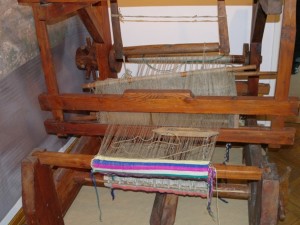To the west of Kuźniczysko, towards Biedaszków, there were few buildings as the settlement, which belongs to the property of the monastery of Trzebnica. The property was bought by Georg Lassat in 1624, then he expanded it and transformed into grange. Hamlet was named from his owner as Lassaterey, then Lassaterei. After the death of Lassata, grange was taken over again by the monastery and assigned to Kuźniczysko.
In XVII century in Lassaterei started large-scale production of flax yarn. Soon in Kuźniczysko other people also started cost-effective production. Until year 1743, every year each farmer delivered one spool of thread yarn to monastery (51 units total) and three people to work at the monastery. Two other farmers delivered yearly 28 units total.
In 1845, in Lassaterei were 4 houses with 30 Evangelic residents and one Catholic. There were two weaving looms, and in the village were three more and also dye-works.
Until years 1880-90 every farm had own field of flax or hemp, at least 1 acre (currently 40,5 ares). Harvest of flax took place in autumn, then flax were dried in large bread ovens, after baking breads. The bread oven in Lassaterei was the largest in those days – at the same time it baked 16 bread loafs.
During spinning, sang a song about king Frederick William III and queen Luiza or other and older song also about the king.




